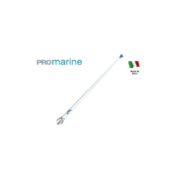
System Features
SkyMate VMS provides continuous, global surveillance and can be configured
• to report at a range of intervals (minutes to days)
• to report at variable rates (e.g. in-harbor, at-sea, geo-fence)
• to report with a standard or advanced format (includes SOG, COG)
• to record positional data (available for interrogation)
• over-the-air by the National FMC (via SkyMate)
There is no means for the fisher to change the reporting interval. The position reporting communications protocol is closed and secure (absolutely no spoofing).
SkyMate VMS provides regulated event surveillance reporting.
There is no means for the fisher to change/adjust an event report. Examples of events reported include the following: Power OFF/ON, Signal Loss, Vessel IN/OUT of a geo-zone, vessel at rest/in motion.
The event reporting communications protocol is closed and secure (absolutely no spoofing).
SkyMate VMS supports custom forms:
- The catch forms can be custom and integrated into the SkyMate m1600VMS. The fisher connects to the m1600 (i.e. with any device with a browser), enters his catch data and sends it to the Regulator/FMC.
– An example of this is the NOAA forms for the Greater Atlantic Region. The NOAA TA systems have 16 distinct forms with over 10,000 declaration codes. - Using a SkyMate m1600VMS interface provided for 3rd party applications, the system can deliver reports created on a Regulator application, transferred to the m1600VMS and then sent to the Regulator.
SkyMate supports updating custom forms on the m1600VMS, over-the-air or over Wi-Fi through the VMS terminal.
Value-added Features
The m1600VMS can be used to send and receive emails anywhere in the world. The Communications Hub has its own SMS phone number (via Twillio), allowing a user, when off-shore, to message any other SMS device on-shore, over the satellite connection.
Through the browser UI, the m1600VMS will provide global weather, on demand, for any location at sea. For example, the Point Forecast weather reports include wave heights, wind speed/direction, barometric pressure and temperature.
The user can request contact with a Search and Rescue service by activating the SOS function (via the KeyPad). The m1600VMS connects directly to the SAR and provides a two-way messaging capability. While the SOS is active, the m1600VMS continually reports the vessel position to the SAR.


